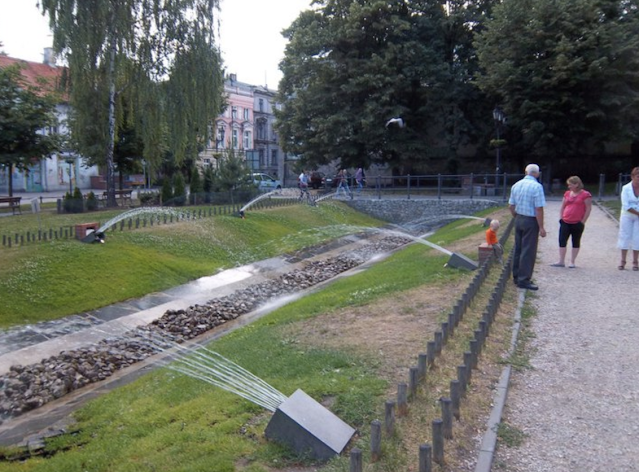When I started this blog ten years ago, I did not really know how to use it, so I simply put photos and comments on Facebook. Now I have the time and in celebration of the ten years of blogging, I am making an actual blog post - actually, several of them about my first trip to Poland.
I had the opportunity to visit Krakow and Gliwice, Poland, June 21 to July 8, with Habitat for Humanity. Instead of the usual project working with families who were investing "sweat equity" with us, this time we worked on the rehab of a 106 year old building that was being developed as a shelter for abused and houseless women. It was a most rewarding experience, plus we got to visit Krakow (including the factory used by Oskar Schindler [and filmed in the movie "Schindler's List"] which is now a museum), the concentration and death camps at Auschwitz and Birkenau, and the Gliwice Radio Tower (the 110 meter tall wooden structure that was where WWII began).
On Tuesday, June 21, I flew from Burlington to Newark, then on to Frankfurt and finally to Krakow, about 24 hours door to door. Based on a recommendation of the HFH team in Gliwice, I stayed at a modest inn within walking distance of the center of Krakow. I arrived on Wednesday, did a brief exploration of the city center and found dinner before getting a good nights sleep. The old city is separated from new city by a beautiful green space.
The main plaza in the old city center is surrounded by beautiful old buildings and many places to eat - except that because of the holiday, they were not open.
The Vistula River runs along the south side of the city.
Thursday was the ninth Thursday after Easter, a Catholic holiday known as Corpus Christi. Being a predominantly Catholic nation, Poland celebrates this as a major holiday. Except for churches and tourist restaurants, everything was closed. These photos are from some of the same locations as Wednesday's photos above.
 | |
Krakow was the home of Pope John Paul, so part of the city center paid homage to their native son.
After the ceremony was done, the main plaza was again empty.
And commercial establishments started operating.
Jagiellonian University was founded in 1365. The famous scientist Copernicus attended school there around 1500. On their website, they comment that Copernicus attended school here some 500 years ago, isn't it about time you did? This statue with plaque commemorates his attendance.
As I walked the city, I saw some graffiti in English - my guess was that since the Iron Curtain came down and the Soviet Union fell apart, there has been some unhappiness with living in a capitalistic society and economy.
If you remember the movie "Schindler's List" you remember that Schindler saved many Polish Jews from the death camps. His factory had just been opened as a museum (we could not take photos inside), but it was very moving, showing the three Krakows - life for the Nazis (very nice), life for non-Jewish Poles (not nice, but at least survivable) and life for Jews (death or near death). I was able to take this one photo outside the museum showing some of the things made in Schindler's factory.
Once most of the Habitat volunteers arrived in Krakow, we took a tour of Krakow that included a visit to a Jewish cemetery and learned that for most graves, rather than putting flowers on the grave, they placed small stones.
The Nazis needed stones for foundations for their new buildings in Krakow, so they took headstones from the Jewish cemetery and used them in their foundations. Since then, those buildings have been carefully dismantled and the surviving pieces of headstones have been made into memorials in the Jewish cemetery.
The city tour took us to some Catholic cathedrals.
We saw more graffiti from angry young unemployed people.
We visited one of the famous synagogues.
Then we took a 90 minute bus ride to Gliwice, our home for the next two weeks.
We stayed at what had been a dormitory for Schlonska Polyteknika University and was now run as a hotel. And then we had a tour of Gliwice. Like Krakow, Gliwice has an old city that was surrounded by a wall (now mostly gone) and a new city around the old city. There was a nice main plaza with restaurants that we frequented several times during our stay.
This building was constructed in 1287.
We visited a local art museum.
And we had our first dinner in Gliwice here.












































No comments:
Post a Comment